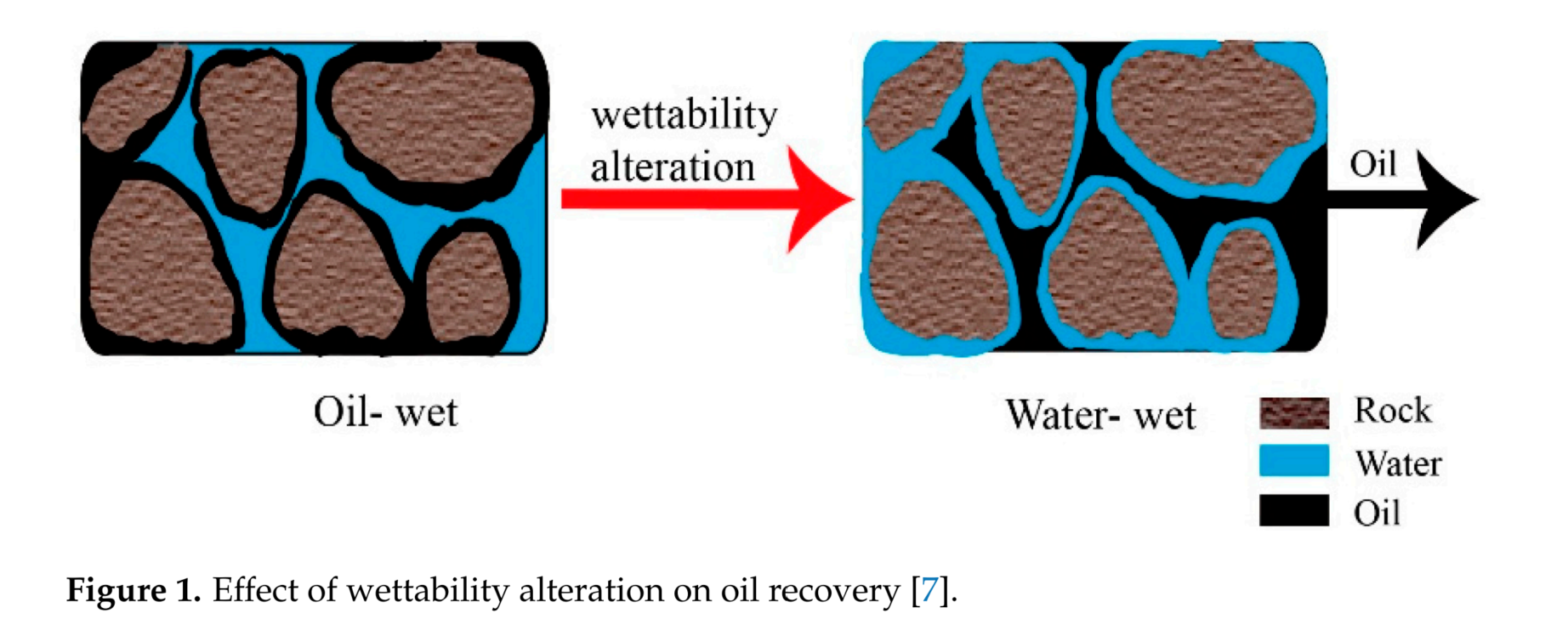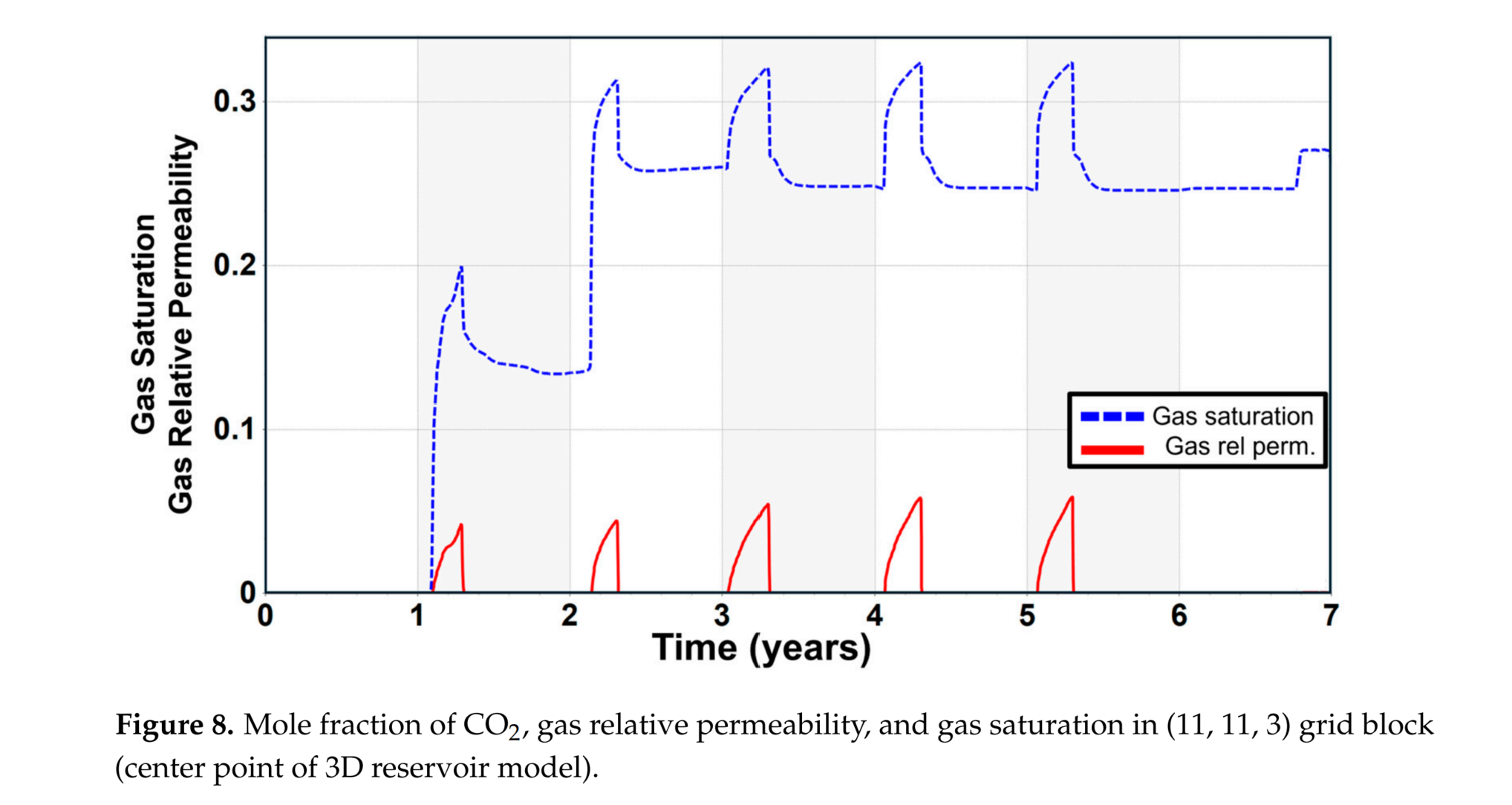Nano-Water-Alternating-Gas Simulation Study Considering Rock–Fluid Interaction in Heterogeneous Carbonate Reservoirs
在碳酸盐岩储层中,纳米颗粒可以附着在岩石表面,可能改变岩石的润湿性,并改变绝对渗透率。在气水交替(WAG)过程中,将纳米颗粒引入水相,称为纳米气水交替(NWAG),这是一种提高采收率和CO2储存的有前景的方法。NWAG过程可以通过岩石表面吸附的纳米颗粒改变岩石的润湿性和绝对渗透率。
本研究使用一维岩心和三维非均质储层模型,研究了利用纳米流体在CO2提高采收率(EOR)过程中同时开采油气和储存CO2的NWAG方法的效率。一维岩心模型的模拟结果显示,应用NWAG方法可以提高油气采收率和CO2储存效率,增加到3%。在三维储层模型中,选择了Dykstra-Parsons系数为0.4来代表储层的非均质性。此外,使用Larsen和Skauge的三相相对渗透率迟滞模型计算了WAG注入期间CO2的毛管力捕集。通过NWAG比例、段塞大小、注入周期、注入循环和纳米流体浓度进行敏感性分析。
结果证实,与常规WAG过程相比,油气采收率增加了0.8%,CO2储存增加了15.2%。这种机制表明,纳米流体可以提高采收率并扩大CO2储存,与常规WAG方法相比,提高油气采收率和CO2储存效率。
CMG软件应用情况:
本研究中,CMG的商业模拟器用于构建一维岩心和三维储层模型,以比较和分析CO2-WAG和NWAG方法的效率。在一维岩心模型中,研究了NWAG方法在油气回收和CO2储存中的适用性。在三维储层模型中,通过设置NWAG比例、段塞大小和纳米颗粒浓度,比较和分析了不同NWAG场景下的油气开采和CO2储存。
此外,为了更准确地理解实际运行过程中的变化,构建了一个反映非均质性和滞后的模型。从构建的模型中,得出了最大化NWAG方法效率的操作参数,并对油气开采和CO2储存效率进行了比较和分析。





Abstract
In carbonate reservoirs, nanoparticles can adhere to rock surfaces, potentially altering the rock wettability and modifying the absolute permeability. In the water-alternating-gas (WAG) process, the introduction of nanoparticles into the water phase, termed nano-water-alternating gas (NWAG), is a promising approach for enhancing oil recovery and CO2 storage. The NWAG process can alter rock wettability and absolute permeability through the adsorption of nanoparticles on the rock surface. This study investigated the efficiency of the NWAG method, which utilizes nanofluids in CO2-enhanced oil recovery (EOR) processes to simultaneously recover oil and store CO2 using 1D core and 3D heterogeneous reservoir models. The simulation results of the 1D core model showed that applying the NWAG method enhanced both oil recovery and CO2 storage efficiency by increasing to 3%. In a 3D reservoir model, a Dykstra–Parsons coefficient of 0.4 was selected to represent reservoir heterogeneity. Additionally, the capillary trapping of CO2 during WAG injection was computed using Larsen and Skauge’s three-phase relative permeability hysteresis model. A sensitivity analysis was performed using the NWAG ratio, slug size, injection period, injection cycle, and nanofluid concentration. The results confirmed an increase of 0.8% in oil recovery and 15.2% in CO2 storage compared with the conventional WAG process. This mechanism suggests that nanofluids can enhance oil recovery and expand CO2 storage, improving the efficiency of both the oil production rate and CO2 storage compared to conventional WAG methods.
Keywords:
NWAG; rock–fluid interaction; carbonate reservoirs; SiO2 nanoparticles
作者单位:
韩国江原国立大学能源与矿物资源工程系
